市场资讯及洞察
.jpg)
本周全球市场情绪偏谨慎,投资者关注即将发布的重要经济数据和企业财报,同时也在重新评估对美联储降息的预期。
美国市场
美国股市方面,周一表现出强劲反弹势头,三大指数齐涨。标普500指数上涨约1.1%,道琼斯工业平均指数与纳斯达克综合指数分别上涨1.1%与1.4%,凸显科技股与大型蓝筹股的带动作用。科技板块中,苹果因 iPhone 销售表现强劲上涨近4%,而英伟达则凭借其新一代芯片发布受到关注,提振整体科技板块人气。
与此同时,10 年期美债收益率上升至 4.68%,为近两周新高,显示投资者在经济数据与通胀预期交织下重新评估美联储的政策路径。收益率走高提振美元表现,并强化其避险吸引力,推动美元指数重回106上方。受此影响,商品货币普遍承压,澳元与纽元兑美元均小幅下挫。
投资者对于即将发布的财报季保持关注。与此同时,美国与中国贸易关系出现缓和迹象,带动市场情绪回暖,但部分投资者担忧政策不确定性仍存,或在短期内引发波动。总体而言,美股反弹体现出资金对科技板块的信心,但在高利率与强美元环境下,市场仍处于谨慎乐观的阶段。
澳大利亚市场
澳大利亚股市 ASX200 指数下跌 0.8%,铁矿石价格回落至 106 美元 / 吨,必和必拓(BHP)和力拓(RIO)等矿业股对大盘构成拖累。澳大利亚统计局(ABS)数据显示,9 月份失业率升至 4.5%,为 2021 年 11 月以来最高水平,表明劳动力市场有所放缓。这一数据使得市场对澳大利亚储备银行(RBA)未来降息的预期升温。澳元兑美元汇率一度短暂反弹,但随后受到美元强势的限制,目前在 0.652 附近交易。
数字货币市场
数字货币市场延续震荡走势。本月 10 日,由于地缘政治与中美贸易紧张情绪回升,数字货币市场出现剧烈波动。全球最大数字货币比特币日内跌幅超过10%,全球总市值缩水约 190 亿美元(约合人民币 2400 亿元),比特币短线跌破10.6万美元关口,以太坊亦失守3800美元一线。
随后,随着投资者逢低买入及部分机构资金回流,市值有所回升,重新回涨至11万美元。市场普遍认为,在宏观经济不确定性与监管风险并存的背景下,数字资产短期内仍难以摆脱高波动特征。投资者可关注美国 SEC 对数字货币 ETF 审批进展,以及美债收益率变化对市场资金流向的影响。整体而言,市场情绪依然偏谨慎,投资者应保持理性并密切关注宏观经济与政策变化。
大宗商品市场
大宗商品方面,避险需求推动贵金属价格走高。近期黄金价格成为市场关注焦点,一度突破两个月新高,达到每盎司 4381 美元,避险买盘明显增加。这反映出市场对地缘政治风险与全球经济放缓的担忧加深。现货黄金价格突破4100美元/千克关口后虽略有回落,但仍处于强势区间,资金持续流入黄金ETF产品,显示避险情绪仍然高涨。
白银走势同步跟随黄金上涨,受工业与避险双重属性支撑,涨幅略优于黄金。原油价格较月初高点明显回落,主要受库存回升和需求疲软影响。短期内油价或维持区间震荡格局。若美国后续公布的通胀与就业数据继续走弱,黄金有望延续上行趋势;但若美债收益率再度攀升,金价短线或面临技术性调整压力。
总结
总体来看,全球市场情绪转趋谨慎,投资者在等待关键经济数据与企业财报结果之际,避险情绪上升。美元的持续强势与美债收益率的上升,对新兴市场与商品货币构成一定压力。与此同时,避险情绪推动黄金与白银走强,显示市场对宏观与地缘风险的防御需求仍在。油价回调则反映出市场对经济增长放缓的担忧。随着本周欧美多项经济数据及主要科技企业财报即将公布,市场波动或将加剧。投资者普遍关注美联储官员的最新言论,以判断降息周期启动时点。整体而言,短期市场走势将受到经济数据、收益率变化及政策预期的共同影响。在当前环境下,资产配置策略宜保持灵活,防御性与成长型板块可适度平衡,以应对潜在的不确定性与市场波动风险。
免责声明:GO Markets 分析师或外部发言人提供的信息基于其独立分析或个人经验。所表达的观点或交易风格仅代表其个人;并不代表 GO Markets 的观点或立场。
联系方式:
墨尔本 03 8658 0603
悉尼 02 9188 0418
中国地区(中文) 400 120 8537中国地区(英文) +248 4 671 903
作者:
Alena Wang | GO Markets 墨尔本中文部


Many traders rely on breakouts as key trading opportunities. The logic is simple: when price moves beyond a well-defined support or resistance level, it signals strength and continuation. However, markets are deceptive, and more often than not, these breakouts turn into fakeouts—also known as false breakouts or traps.
A fakeout occurs when price briefly breaks a key level, triggers breakout traders into positions, and then reverses sharply in the opposite direction. This traps traders on the wrong side, often leading to stop-loss hits and unnecessary losses. Fakeouts are particularly frustrating for traders who follow textbook breakout strategies because they often get stopped out right before the market moves in their original direction.
However, these false breakouts aren't just random occurrences—they happen due to liquidity grabs, institutional trading strategies, and market psychology. Why You Need to Understand Fakeouts Understanding how and why fakeouts occur is a crucial skill for price action traders because: Fakeouts trap retail traders, and recognizing them early helps you avoid costly mistakes. Fakeouts offer high-probability reversal setups for traders who can spot them in real-time.
Fakeouts reveal where liquidity exists—a key factor in how institutions trade. Learning to trade against fakeouts allows you to think like professionals rather than follow the herd. This article will break down what fakeouts are, why they happen, how to identify them, and most importantly—how to avoid getting trapped and profit from them instead.
What is a Fakeout in Price Action? Definition: A fakeout (false breakout) occurs when price briefly moves beyond a significant level (support, resistance, or a trendline) but fails to continue in the breakout direction and reverses, trapping traders who entered on the breakout. Fakeouts happen in all markets, asset classes and across all timeframes, making them a universal challenge for traders.
Why do Fakeouts Happen? Four main reasons are cited in the trader literature, for each of these explanations as to what may be happening and examples will be given. Liquidity Hunting (Stop-Loss Grab by Institutions) Large institutional traders execute massive trades that require a significant number of buy or sell orders to fill their positions.
Since liquidity is invariably concentrated either side of key levels, institutions will often trigger stop-losses before reversing price. How this works: Retail traders place stop-losses just beyond support and resistance. Smart money (institutions and market makers) push prices beyond these levels to trigger stops and create liquidity.
Once stop orders are triggered, institutions enter their own trades at optimal prices before reversing the move. Example: EUR/USD is trading near strong resistance at 1.1000. Many traders expect a breakout and place buy orders above this level.
Meanwhile, traders who are short have stop-losses above 1.1000. Institutions push prices just above 1.1000, triggering stop-losses and breakout buy orders. As soon as enough orders are activated, institutions reverse the price downward, trapping long traders.
Retail Trader Traps (Herd Mentality Exploitation) Retail traders often trade breakouts in predictable ways, meaning their behaviour is easy for professionals to manipulate. Many use simple breakout strategies, where they enter long trades above resistance and short trades below support. Institutions exploit this retail behaviour by triggering these breakouts and quickly reversing price, often resulting in retail traders exiting trades in panic.
Example: Price approaches a well-established support level at $50.00. Retail traders place buy orders right at $50.00, expecting a bounce. Instead, price briefly dips below $50.00, stopping out traders who had tight stop-losses below support.
The market then rebounds strongly, leaving stopped-out traders frustrated and missing the real move. Market Manipulation (Whale Activity & Stop Runs ) Large market participants, often called whales, engage in strategies that artificially create breakouts to lure in traders. This is a more aggressive form of liquidity hunting.
How whales manipulate price: They place large fake buy or sell orders to create an illusion of demand or supply. Retail traders react by jumping in on the breakout, adding liquidity. Once enough traders enter, whales reverse the move and trap breakout traders.
Example: Bitcoin breaks above $100,000, attracting thousands of breakout traders. Shortly after, price suddenly dumps to $98,500, triggering stop-losses before eventually rallying higher. Low Volume Breakouts (Weak Buying/Selling Pressure) A true breakout should be accompanied by strong volume, confirming that buyers or sellers are committed to pushing the move further.
Fakeouts often happen when price breaks a key level but lacks volume, signalling that the breakout is weak and likely to fail. How to Spot Low Volume Fakeouts: A breakout occurs on low volume, meaning there is no real buying or selling pressure behind it. Price moves beyond a key level but quickly returns inside the previous range.
A sudden spike in volume after a reversal confirms that institutions entered against the breakout. Example: Gold breaks above major resistance at $2,700 but does so on low volume. The price moves slightly higher but quickly falls back below $2,700, confirming a fake breakout.
How to Avoid Getting Caught in Fakeouts There are three VITAL ways in which you can look to reduce the chance of getting caught in a fakeout. These are as follows: Wait for Confirmation Before Entering Breakout Trades One of the biggest mistakes traders make is entering trades immediately after a breakout. A breakout should be confirmed before entry, or it risks being a fakeout.
How to confirm a breakout: Wait for a strong candle closing beyond the breakout level on your relevant timeframe (ideally over multiple timeframes rather than taking action intra-candle before it is mature. Acting on candle bodies rather than wicks as a general rule may be prudent. Observe whether price holds above support/resistance on a retest.
It is thought that up to 35-40% of breakouts will retest so being patient and allowing your trade to breathe may be worth exploring. Obviously, a continued move back through a ley level may be a different signal i.e. of a fakeout. Look for multiple confluences (trend alignment, volume confirmation, and price action signals).Note: this may take some time and significant testing to find the right set of confluence factors that are optimum for your trading style and risk tolerance 2, Using Volume as a Confirmation Tool Volume provides a clear indication of breakout strength and is a real time indicator rather than lagging.
A real breakout, that may give the best chance for a positive outcome, should have rising volume, while a fakeout often occurs on weak volume. How to use volume confirmation: If volume increases significantly during a breakout, the move is likely real. If volume remains low, the breakout is suspicious and may fail.
A spike in volume on the reversal suggests a fakeout has trapped traders. Example: A breakout above a key level occurs on low volume, suggesting that buyers are not fully committed. Shortly after, price falls back inside the range, confirming a fakeout.
Trade in the Direction of the Higher Timeframe Trend Fakeouts are more common when a breakout occurs against the prevailing trend. How to use trend confirmation: If the higher timeframe trend is bullish, avoid short trades on a minor timeframe breakout. If the higher timeframe trend is bearish, avoid chasing upside breakouts.
Obviously one of the challenges is to determine which is the appropriate longer timeframe(s) to use for your chosen primary trading timeframe. To give an extreme example, it hardly seems rational to use a daily timeframe to check for a 5-minute timeframe trade, in such a case an hourly trade may be more logical. Example: A daily chart shows a strong downtrend, but the 1-hour chart shows a bullish breakout.
Instead of going long, wait for a fakeout and trade the reversal in the trend direction. How to Profit from Fakeouts (Taking advantage of potential “trapped” Traders) As with all trading activity the aim to give yourself a potential edge, i,e an advantage over other market participants. There are always winners and losers, your responsibility of course is to make sure you are on the right side of that.
Therefore, considering how you may act more as the institutional professional trader may do and take advantage of such fakeouts could put you on the right side of the market moves. Part of this, albeit at an intermediate level, could be to look at strategies that may offer opportunity when price has failed to breakout. I will briefly outline the thinking behind two of the more common approaches to achieve this in step-by-step format.
The Fakeout Reversal Trade Wait for the fake breakout to occur. Look for rejection candles. Enter a trade in the opposite direction.
Set your stop-loss above/below the fakeout wick. Target a logical exit point (previous support/resistance). The Liquidity Trap Setup Identify key liquidity zones where fakeouts are likely.
Look for aggressive price spikes followed by quick reversals. Enter against the breakout once confirmation occurs. Summary Fakeouts are a common market phenomenon that trap traders who enter breakouts too early.
By waiting for confirmation, using volume analysis, and understanding liquidity grabs, traders can avoid being trapped and even profit from fakeouts. Remember the following key points from this article as you move forward: Fakeouts are not random—they happen because of institutional liquidity hunting. Volume, trend alignment, and confirmation candles help filter fake breakouts.
Fakeouts may offer high-probability reversal opportunities if traded correctly.
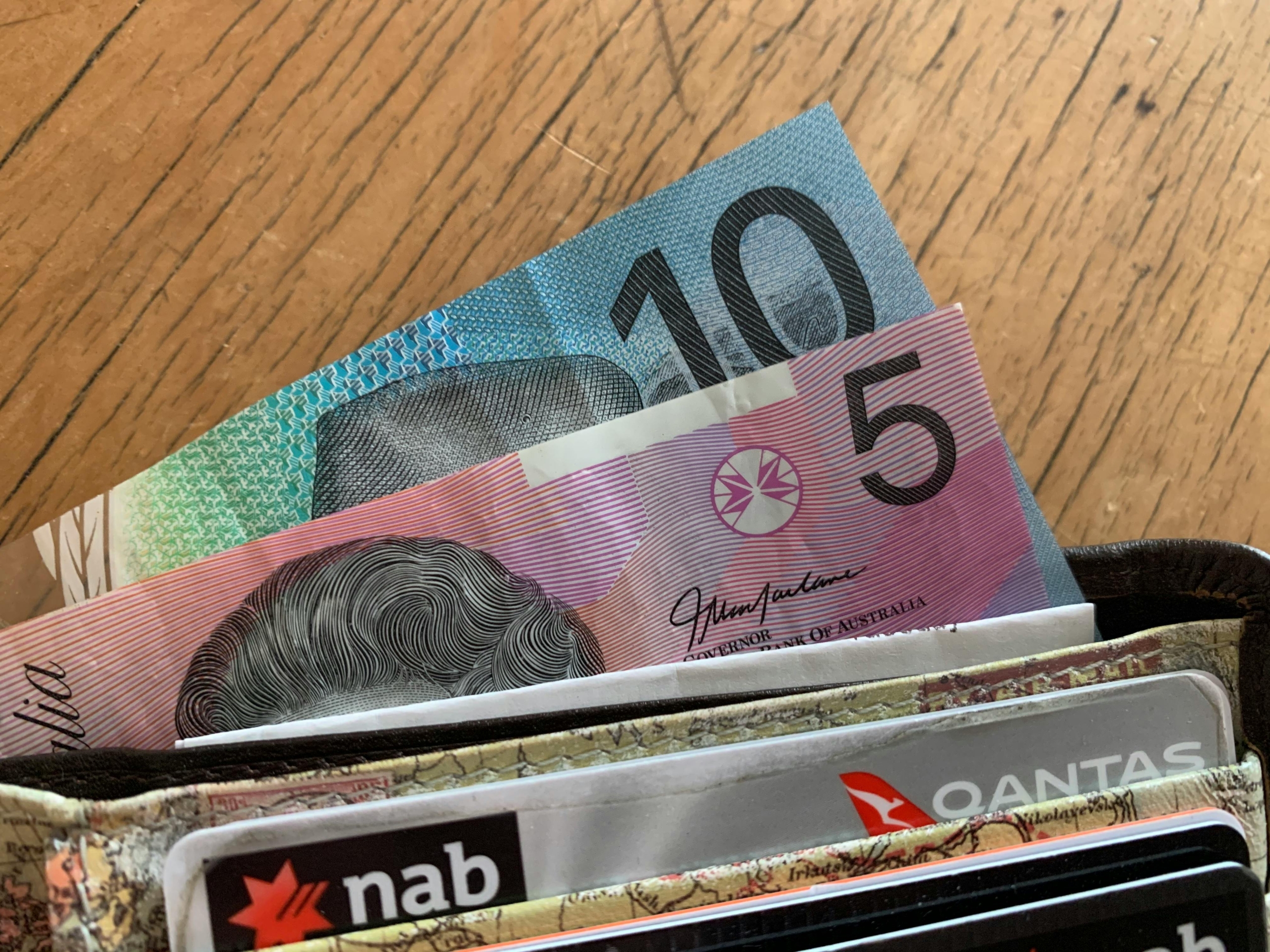

赤字狂飙,美国财政纾困已迫在眉睫。2024年1月,美国财政部公布的数据显示,当月财政赤字高达1290亿美元,同比暴增近5倍,环比增长48%。这一数字背后,是美国财政赤字率持续攀升的严峻现实——2023年赤字率已突破6%,远超拜登政府承诺的“3%红线”。更令人担忧的是,随着债务利息支出(2023年达1万亿美元)和社会保障等刚性支出占比超过70%,美国的财政结构已陷入“借新还旧”的恶性循环。
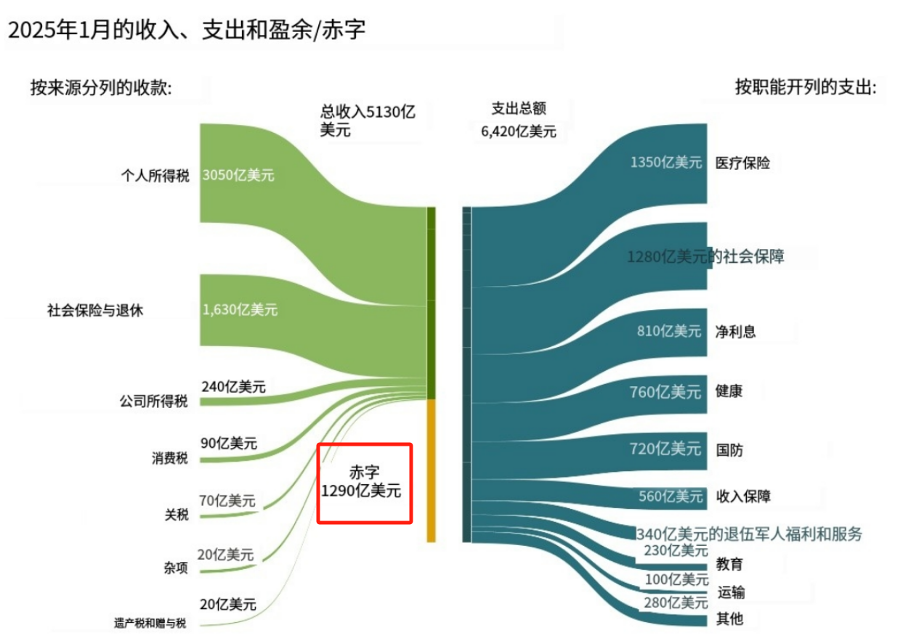
财政压力倒逼,如何缓解?基于近期特朗普政府各类动向,三大路径浮出水面。一是压低国债利率,二是政府降本增效,三是砍军费。理论上美国政府存在这三种选择,但各自的可行性差异悬殊:路径一:压低国债利率如果10年期美债收益率从4.5%降至2.5%,每年可节省数千亿利息。然而,这需要美联储大幅降息,而当前3.3%的通胀率(远超2%目标)让鲍威尔难有操作空间。2月20日公布的美联储1月会议纪要显示,许多委员支持在经济强劲、通胀顽固的情况下保持利率的限制性,进一步释放了暂不降息的信号,而当前强劲的就业市场也可以使得美联储在理论问题上从容不迫。路径二:政府降本增效马斯克的“政府效率部”(DOGE)已在五角大楼裁员数千文职,但进一步压缩可能激化社会矛盾。2023年联邦雇员罢工潮显示,此举政治风险极高。最新数据显示,政府效率部政绩存疑,官网显示其推动实现的撙节规模远低于之前宣称的550亿美元。路径三:砍军费美国2024财年军事预算高达8950亿美元,占全球军费总额的40%。若按特朗普“减半”设想,每年可释放超4000亿美元用于减税、基建或填补赤字。副防长萨勒塞斯直言:“我们必须停止在上届政府‘觉醒计划’上的浪费。” 尽管面临国会阻力(共和党主张增军费),但特朗普巧妙地将削减与“战略转型”捆绑。如果能成功拉拢中俄同步减支(如2月13日其提议的“美俄中东大各裁军50%”),既能缓解国际压力,又可释放资源回补国内。因此特朗普瞄准了国防预算。根据五角大楼本周三披露的备忘录,特朗普团队计划从2026财年起,每年从近万亿美元国防预算中“砍掉”500亿美元(约8%),重点保留He武器、边境安全、无人机等核心项目,而将矛头指向气候变化、多元化平权(DEI)等“低效开支”。

如果美国带头削减军费,将会引发资本市场一系列连锁反应:一是黄金拐点或受到影响。2022年俄乌冲突后,全球央行年度购金量突破1000吨,与军费增长高度正相关。若军费收缩,俄乌冲突缓解,各国央行购金需求将降低,尤其是紧邻乌克兰的波兰首当其冲,当前波兰是第一大购金国。具有天然避险属性的黄金可能出现拐点,2月14日金价闪跌已显露市场焦虑。二是经济格局调整。释放的4000亿美元若投入基建和制造业(如芯片补贴),可能加速产业链重组;但军工复合体的利益集团反抗不容小觑,洛克希德·马丁等军工巨头已开始游说国会。削减军费看似是解决赤字的“捷径”,实则是一场高风险博弈。短期看,它能缓解财政压力并为特朗普的政治议程输血;但长期而言,可能动摇美国军事根基,甚至重塑全球秩序。正如兰德智库警告:“节省每一美元军费的同时,都可能让对手获得十倍战略优势”。而对于全球市场而言,黄金、美元、军工股的剧烈波动,或许才刚刚开始。免责声明:GO Markets 分析师或外部发言人提供的信息基于其独立分析或个人经验。所表达的观点或交易风格仅代表其个人;并不代表 GO Markets 的观点或立场。联系方式:墨尔本 03 8658 0603悉尼 02 9188 0418中国地区(中文) 400 120 8537中国地区(英文) +248 4 671 903作者:Christine Li | GO Markets 墨尔本中文部


截至2025年2月17日,黄金市场呈现出显著的波动性。现货黄金价格在上周五经历了两个月来的最大单日跌幅后,周一早间反弹上涨,维持在每盎司2895美元附近。国内方面,黄金价格每克676.2元,国际金价为2899美元/盎司(约合675.9元/克)。瑞银(UBS)最新预测,黄金可能在2025年触及每盎司3,200美元以上,并在未来几年保持较高水平。高盛(Goldman Sachs)也上调了对年底金价的预期,从此前的2,890美元提高至3,100美元,主要原因是各国央行持续增加黄金储备。市场的强烈看涨情绪、投资者的低配情况以及官方部门需求的持续增长,是推动金价预期上调的关键因素。

自2025年初以来的短短六周内,黄金价格已经创下八次历史新高。分析师指出,错过了2024年短期买入机会的投资者可能会采取“逢低买入”的策略,更积极地抓住市场回调的机会。瑞银认为,流动性问题可能进一步放大黄金的涨势,使市场对实物需求的增长尤为敏感。技术分析黄金价格突破了对称三角形形态,显示出持续的看涨动能。根据Investopedia的报道,若金价突破2,900美元,可能会进一步上涨至3,098美元。关键支撑位包括2,790美元、2,530美元和2,430美元,投资者可在价格回调至这些水平时考虑买入机会。从K线图来看,黄金价格近期呈现出稳步上升的趋势。日线图上,多根阳线连续出现,显示出买方力量的强劲。移动平均线系统(如50日和200日均线)也呈现多头排列,进一步巩固了上行趋势。然而,投资者应关注相对强弱指标(RSI)等超买信号,以防范短期回调风险。

基本面因素基本面因素同样支撑金价上涨。全球经济不确定性、地缘政治紧张局势以及通胀预期的上升,促使投资者寻求黄金等避险资产。各国央行,特别是中国,持续增加黄金储备,进一步推高了市场需求。目前,国际局势尤其值得关注。美俄会谈即将在沙特举行,旨在探索乌克兰局势的潜在解决方案。特朗普政府希望通过与普京的谈判达成和平协议,并推动欧洲承担更多防务责任。这一谈判的进展可能影响市场情绪,若会谈取得突破,可能导致避险需求下降,从而短期内对金价产生压力。然而,市场对全球政治局势仍充满不确定性,黄金的长期吸引力依旧强劲。与黄金相关的投资产品近期价格
- SPDR Gold Shares ETF (GLD):当前价格为266.29美元,较前一交易日下跌4.05美元(约1.5%)。
- iShares Gold Trust (IAU):当前价格为54.46美元,较前一交易日下跌0.825美元(约1.5%)。
- Barrick Gold Corp. (GOLD):当前价格为17.94美元,较前一交易日下跌0.5美元(约2.7%)。
- Newmont Corp (NEM):当前价格为46.54美元,较前一交易日下跌1.21美元(约2.5%)。
以上价格截至2025年2月15日,市场行情瞬息万变,投资者应及时关注最新数据。结论黄金市场在多重利好因素的推动下,展现出强劲的上涨势头。投资者应密切关注技术指标和基本面变化,制定适当的投资策略,以在波动的市场中把握机遇。随着美俄会谈的推进,市场避险情绪可能受到影响,但在全球央行购金需求强劲、市场流动性较低以及投资者持续追逐避险资产的背景下,黄金仍然具备长期投资价值。免责声明:GO Markets 分析师或外部发言人提供的信息基于其独立分析或个人经验。所表达的观点或交易风格仅代表其个人;并不代表 GO Markets 的观点或立场。联系方式:墨尔本 03 8658 0603悉尼 02 9188 0418中国地区(中文) 400 120 8537中国地区(英文) +248 4 671 903作者:Sylvia Qin | GO Markets 悉尼中文部


昨日,澳大利亚储备银行(RBA)宣布将基准利率下调25个基点至4.1%,这是自2020年以来的首次降息。此举旨在应对国内经济增长放缓和通胀压力减弱的局面。然而,这一政策调整不仅影响澳大利亚本国经济,也在全球范围内引发了一系列连锁反应。这次澳联储的降息决定主要基于通胀放缓和经济增速放缓两个基本因素。从2022年通胀达到峰值以来,澳大利亚的基础通胀率已从高位回落至3.2%,说明通胀压力的缓解速度略快于预期。 并且2024年第四季度数据显示,澳大利亚GDP增长动力已经开始减弱,主要可以体现在家庭消费疲软,私营部门就业增长乏力等方面。然而虽说是降息了,但澳联储主席米歇尔·布洛克强调,货币政策仍将“保持紧缩”,未来的政策调整需要根据通胀与就业数据而决定。

这次澳联储降息的影响并不仅仅局限于对澳洲经济市场,全球范围内债券和外汇市场等等都受到了不同程度的影响。比如受澳联储降息影响,全球多国政府债券收益率上升:美国10年期国债收益率升至4.55%,英国10年期国债收益率攀升至4.56%,德国10年期国债收益率上升至2.5%,澳大利亚10年期国债收益率跃升至4.51%。而外汇市场上与澳币相关的货币对波动则更加明显,澳元兑人民币的汇率经历连续上涨后在18日开始下跌,但消息公布后有瞬间上涨趋势至4.6211,澳元兑美元的汇率也同样走高至0.6366。这次降息并没有使澳元下行的原因也有很多,比如市场早就对此次降息做出了预期,从通胀、汇率等数据可以看出已经对此次降息做出了消化。尽管实施了降息,澳联储在政策声明中仍强调,未来的货币政策将依旧保持谨慎,避免过度宽松。这种鹰派立场增强了投资者对澳元的信心,推动了其汇率的上升。而全球范围内风险情绪的改善也给澳元带来了短期的支撑,近期全球贸易紧张局势有所缓解,市场风险偏好上升,投资者对高收益资产的需求增加。而澳元作为商品货币,通常会在风险情绪改善时受到追捧,从而升值。

对于澳洲本国来说,最显著的变化可能就是房产业要迎来明显提振。降息通常会降低贷款成本,提高借贷意愿,尤其是在澳洲这样一个高度依赖房贷的市场。过去一年,由于高利率环境,澳大利亚房地产市场经历了一段低迷期,房屋销售量放缓,投资者持观望态度。而本次降息可能会推动房屋贷款需求回暖,带动房价出现短期反弹。然而,考虑到澳联储仍然维持相对谨慎的政策立场,长期来看,房价上涨的可持续性仍需关注未来的利率变化和市场信心。其次这次降息也会给澳洲的消费市场带来信心,根据澳洲零售协会(ARA)的数据,澳洲零售销售自2024年下半年以来增长乏力,但这次宽松货币政策的实施会有效帮助刺激澳洲消费经济,推动消费回暖。
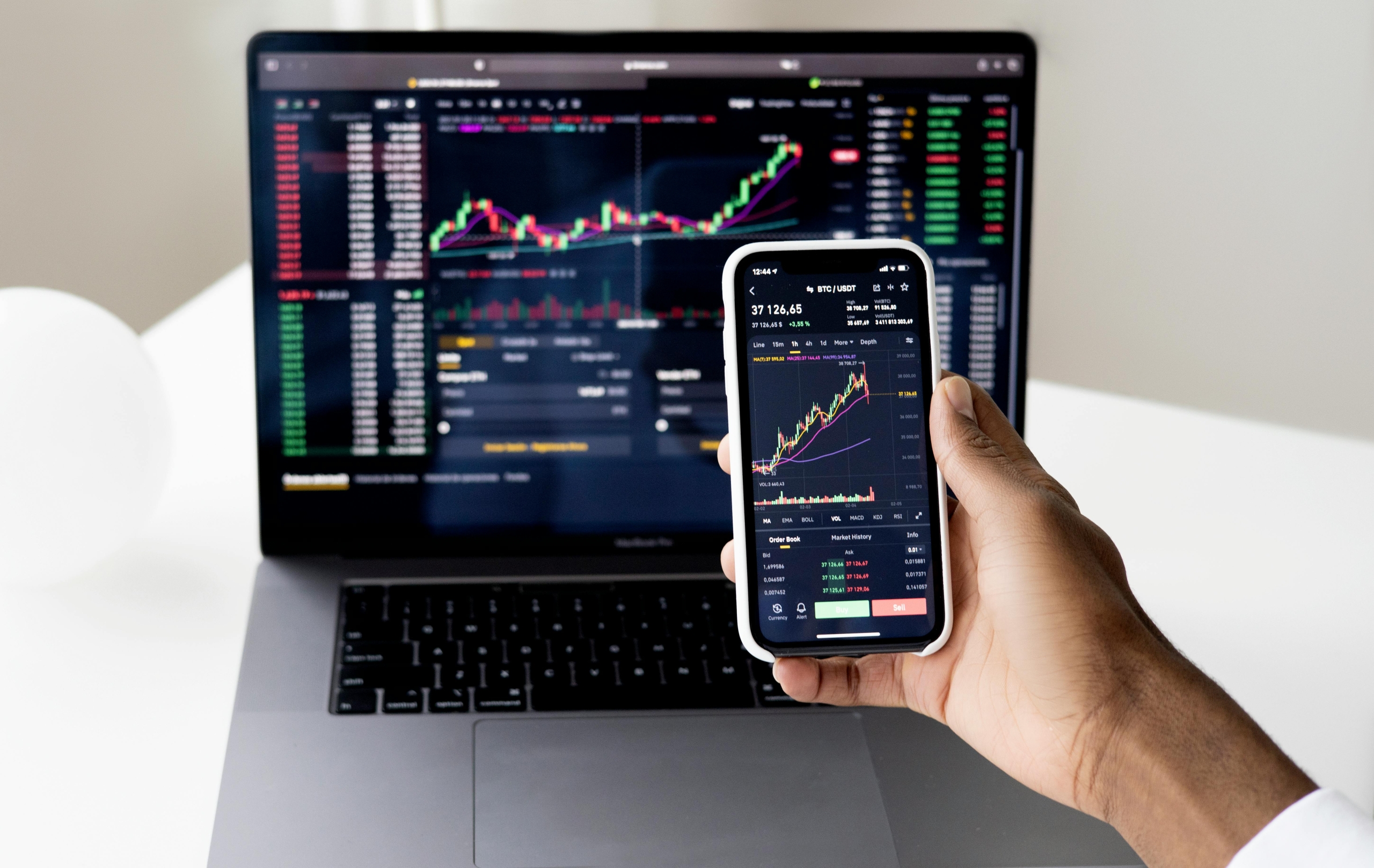
最后,国际贸易层面,澳元贬值的预期可能提振出口,但进口成本上升或带来挑战。尽管本次降息后澳元短期内走强,但整体来看,随着市场对未来进一步降息的预期增加,澳元可能面临一定贬值压力。较弱的澳元通常有利于出口,澳大利亚的矿产(如铁矿石)、农产品(如小麦、乳制品等)在国际市场上的竞争力将有所增强。但与此同时,进口商品价格可能上升,尤其是澳洲高度依赖进口的电子产品、汽车和消费品等领域,可能会使得国内消费者面临更高的进口成本,影响部分行业的盈利能力。总的来说,尽管澳联储开启了降息周期,但其谨慎态度表明,未来政策走向将取决于经济数据和全球经济环境的发展。所以短期内澳元可能还是会受到支撑抵抗下行风险,但未来究竟会如何变化,作为投资者的我们能做的就是多观察市场动态和各国联储的态度,灵活应对不断变化的经济形势。免责声明:GO Markets 分析师或外部发言人提供的信息基于其独立分析或个人经验。所表达的观点或交易风格仅代表其个人;并不代表 GO Markets 的观点或立场。联系方式:墨尔本 03 8658 0603悉尼 02 9188 0418中国地区(中文) 400 120 8537中国地区(英文) +248 4 671 903作者:Yoyo Ma | GO Markets 墨尔本中文部
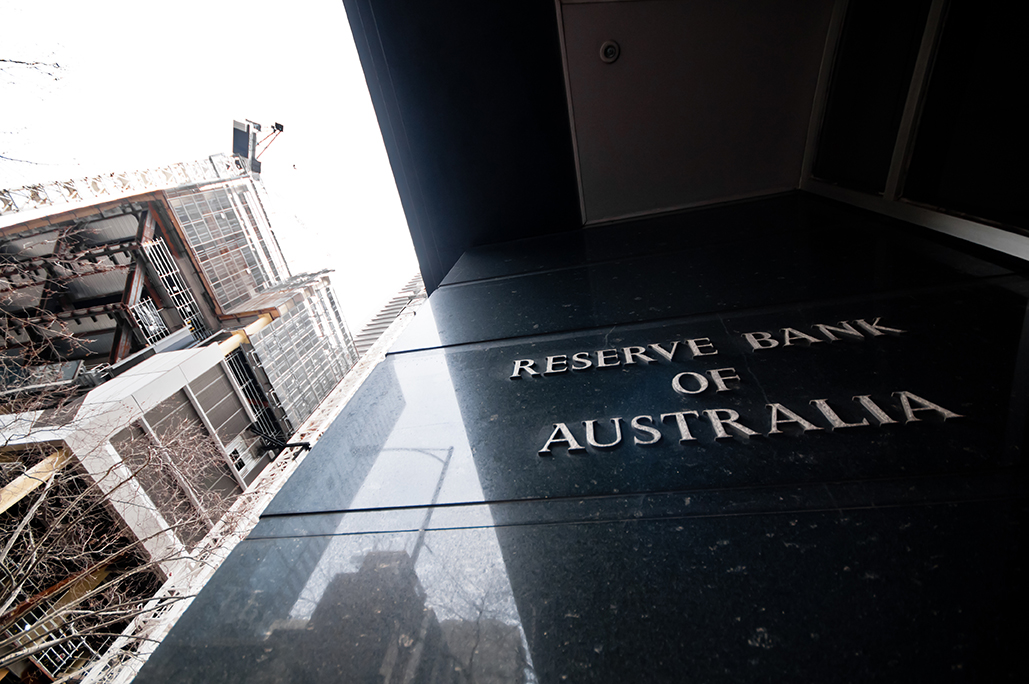

So for the first time in over four years the Reserve Bank of Australia (RBA) has cut the official cash rate by 25 basis points to 4.1%. They fired the gun they've loaded it for the possibility of more but are they blanks? Let's drive into what was said in the statement, what outlook was given and what this means for the Australian dollar and your trading going forward.
First – the action. The RBA made its first move in over a year 15 months to be exact, cutting the cash rate by 25 basis points to 4.1% at its February meeting. This marks the first rate reduction since November 2020, and marks what looks to be the other side of the “Table Top” mountain effect for the cash rate as we had discussed when the hike cycle began.
While the cut itself was widely expected - the RBA went full hawk in explaining what the outlook and rate cutting cycle will look like particularly on expectations of an extended easing cycle. To really highlight this point, have a look at the AUD when RBA Chair Michele Bullock was speaking on this point during her press conference. The short reversal is telling.
The crux of the whole position is - the RBA acknowledges progress on inflation but remains cautious about declaring victory. And that is a fair position to hold, core inflation is running at 3.2% and headline at 2.4%. Yet the bank is forecasting headline inflation to flare to 3.7% come December with core (trimmed mean) at 2.7% unchanged for TWO AND A HALF YEARS!
It reflects a delicate balancing act—while inflation is tracking lower, the labour market remains unexpectedly tight. The central bank wants (needs) more evidence before committing to further cuts, making it clear that markets are getting ahead of themselves hence the moves in the AUD. It begs the question: Why Cut Rates Now?
The Inflation-Labor Market Trade-Off Clearly the RBA’s decision to ease policy was largely driven by better-than-expected inflation data in Q4 2024. Disinflation has been happening faster than anticipated, which gave the central bank confidence to remove some policy restrictiveness, which it has always said it would as soon as it thought it could. But inflation is only one side of the equation.
The flip side is the labour market – which is hot and running hotter than expected. Unemployment remains at 4.2%, below the RBA’s estimated full employment level of 4.5%. While job vacancies have eased slightly, demand for workers remains strong, which could keep wage pressures elevated.
Caveat – the wage price index the day after the RBA meeting came in at 3.2% meaning in real wages terms wages growth is 0. But – it still presents a risk: easing too much too soon could reignite inflation, particularly in wage-sensitive sectors like services. Hence the hawkish stance.
As mentioned inflation is projected to settle at 2.7%—still above the 2.5% midpoint of its target range—while unemployment is expected to remain relatively low. This suggests that the RBA is not entirely convinced that inflation will continue declining without further policy restraint. The central bank is effectively saying: "We’ll cut where possible as we don’t want to leave policy restrictive any longer than necessary, but we’re not ready to call this the start of a full easing cycle." Is this just new aged jawboning?
Moderating the Market We feel we are now entering a new phase – upside jawboning a deliberate ploy to temper market expectations and more importantly – the consumer. The concern is that easing policy could trigger a rebound in spending, asset prices, and broader economic activity—creating inflationary pressures that could undo recent progress. This is why Governor Michele Bullock took a firm stance in her press conference, directly challenging the market’s expectation of multiple rate cuts and described the market’s pricing—which holds three additional cuts in 2025—as " far too confident." In short the Board’s message is clear: February’s cut does not automatically signal a sustained easing cycle.
The Board remains data-dependent and will only consider further rate reductions if inflation risks subside and the labour market shows definitive signs of cooling. What’s the biggest threat to the RBA? The Federal Election and Fiscal Policy Never underestimate a government and spending money – which makes fiscal policy risk number 1.
With a federal election due by May 17, government spending could play a significant role in shaping the economic outlook. If fiscal stimulus is ramped up, through cost-of-living relief measures or infrastructure spending, it will add upward pressure to inflation, thus reducing the urgency for further rate cuts. The RBA has explicitly stated that its forecasts do not assume any additional election-driven spending, meaning any surprises on this front could alter the rate outlook and the 3.7% headline figure could be worse.
Consumer and Housing Market Reactions Another key factor is how households respond to this rate cut. If consumer confidence rebounds strongly and household spending picks up, this may also signal a reassessment. Housing both prices and construction activity will be other critical indicators.
A surge in property market activity, driven by lower borrowing costs, could create renewed inflationary pressures, forcing the RBA to hold back on further cuts. And let’s be honest this has happened every easy cycle. Global Economic, Geopolitics The broader global economic landscape also plays a role.
If central banks in major economies, such as the US Federal Reserve, move more aggressively on rate cuts, this could influence the RBA’s decision-making. A more dovish global monetary environment could ease financial conditions in Australia, allowing the RBA to be more patient in its approach. Counter this with trade tariffs, trade wars and tit-for-tact reactions that increase inflation may lead to not only a long pause but also the risk of hikes.
Crystal ball time For now, the market has a cut fully priced in by the July meeting but the risk of a delay is growing. The RBA’s cautious approach suggests it wants more time to assess how inflation, employment, and economic activity evolve before making another move, suggesting September is a more likely month for the next cut, all things being equal. Ultimately, the path forward remains highly uncertain.
This means the central bank is unlikely to move quickly, and expectations of a rapid series of rate cuts may need to be revised. Hence as traders the AUD weakness may now have found a floor as cuts are not going to be as forthcoming. In short: while this cut marks the beginning of policy easing, it’s far from a signal that the RBA is on an aggressive cutting path.
The data will dictate the next steps, and for now, the Board remains firmly in watch-and-wait mode.
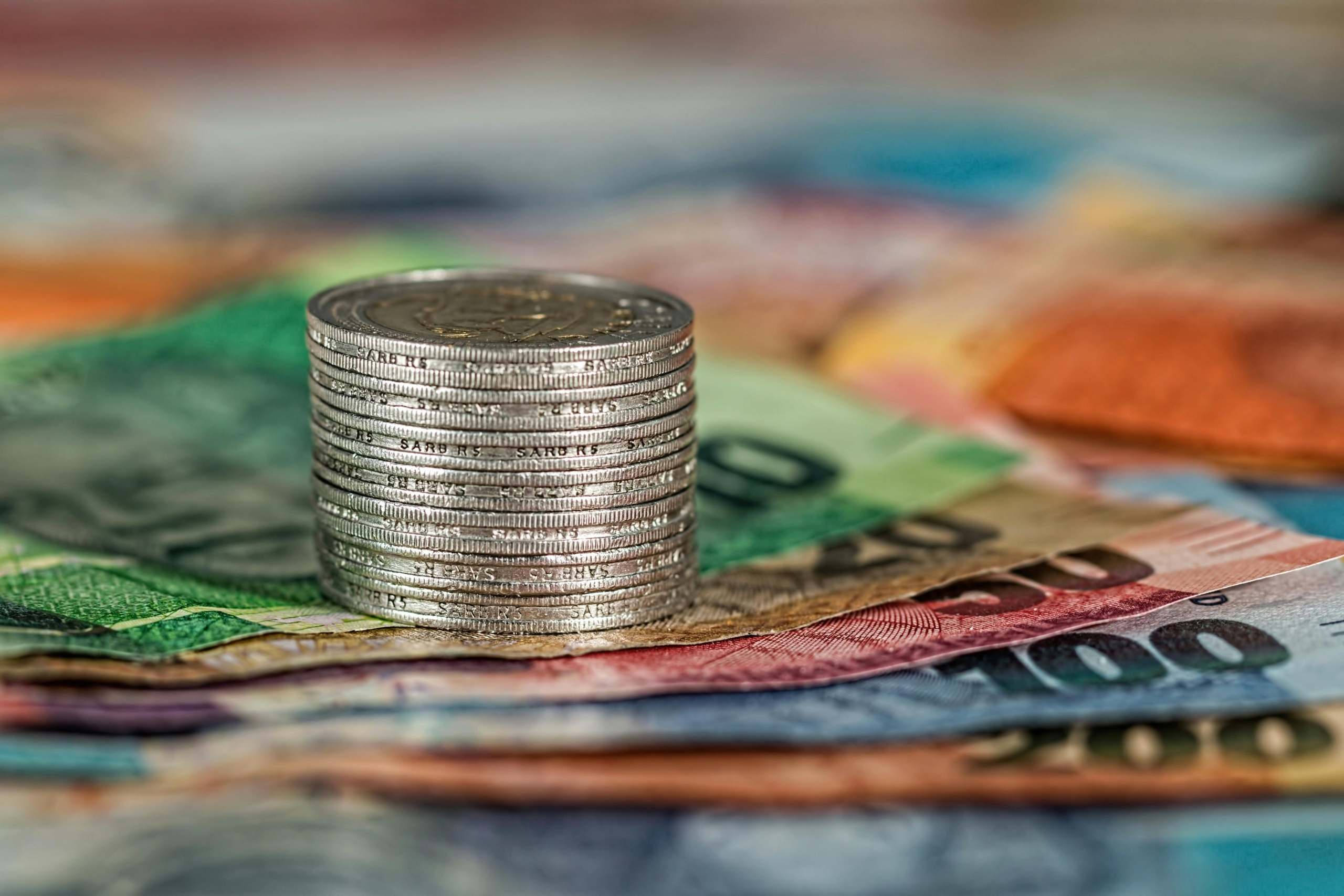

之前几个月说了很多纯文字版的分析,今天再让我们回到当年,用红极一时的K线图配合基本面分析给大家来做一次专业且全面的澳元分析扯淡。首先要和大家澄清,按照科班培训模板,也就是咱们经常说到的那些投行,基金公司的分析模板写作模式,看上去很难,但是实际上和我们中学语文作文模板差不了多少。基本结构就是:总结式开头,加一个背景介绍,然后按照时间线来走:先切入产品过去12个月走势,配合过去12个月的基本经济环境加上这个产品所在行业或领域的经济变化。第二步:说现在,当前走势如何,以及当前产品所在行业或领域的经济情况和其他环境如何。第三步:猜未来。毕竟未来谁也不知道,所以不论分析的多专业,多仔细,说到底,都是猜测。无非就是可能性大和小的不同。好了,我们开始。总结式开头:澳元,又被称之为大宗商品货币,其走势和很多工业原材料例如铁,煤,铜等价格走势有着密切的联系。而由于目前中国是全世界对于工业原材料消耗和进口量最大的国家,因此中国对于资源的需求量,将会对澳元走势产生巨大的影响。而除了铁矿石价格会影响澳元以外,美元加息的快慢,以及中国本身的经济走势也是另外两个影响澳元走势的重要原因。下一步:说过去。澳元在过去20年实际上和美元的汇率几乎经历了50%的起伏变化。从2007年巅峰时期超过美元1:1的汇率,到2018年的一度逼近0.5,再到2020年重新回到0.8,最后到如今的0.63附近.如果用一句话来总结澳元过去24年的走势,基本上和中国在2000年初加入世贸以后的经济周期高度重合。

在上面这幅澳元25年的走势图力,其中三个最关键的价格分别是
- 2001年初中国加入世贸以后的经济腾飞
- 中国在金融危机之后宣布4万亿刺激计划后的1年。
- 中美贸易战最严重的时期。
如果我们从超长时间周期,月线图上来看,澳元/美元其实早在2014年之后就跌破了关键的支撑位,最然在2016和2020年两次向上突破但是都没有冲破趋势线。在2020年之后,澳元和美元的走势几乎就是一路向下。而且从现在的长期趋势线组之间的距离来看,这个下跌的趋势并没有缓和,反而似乎还在加剧。其背后的原因,很大程度上也和中美高度竞争以及房地产行业停滞之后的经济有关。第二步:说现在说现在,通常就是说过去12个月到目前为止的走势。还是一样,完整的分析需要经济面+技术面综合考虑。过去12个月,是美国一直降息的过程,然而奇怪的是,按理说,美国降息,澳元不降息,那澳元利息是不是比美元还高?那是不是应该美元下跌,澳元反向上涨呢?如果抛开其他因素,这个逻辑是对的。但是,影响澳元的三大因素中,排在美元利息之前最大的影响因素则是铁矿石的价格走势。
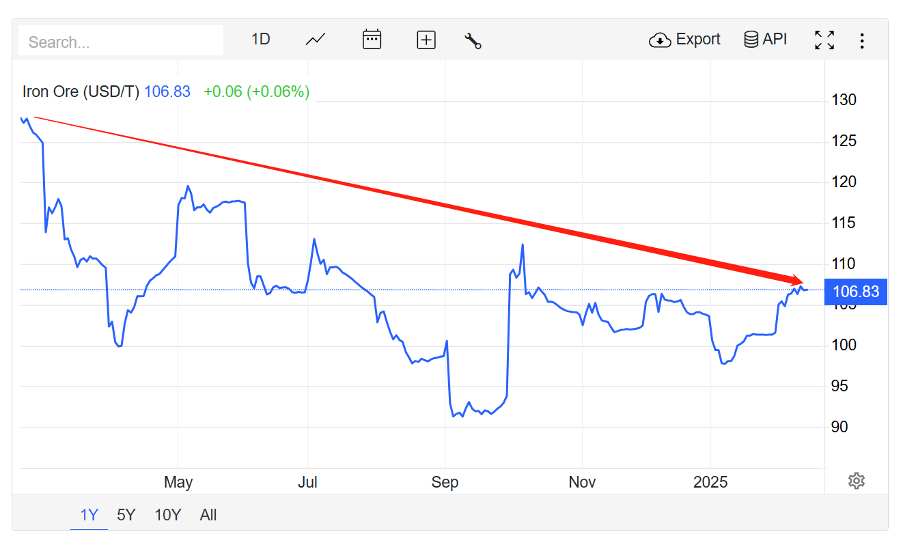
然后我们再来看看过去12个月澳元和美元的走势图他们是不是大趋势上很像?
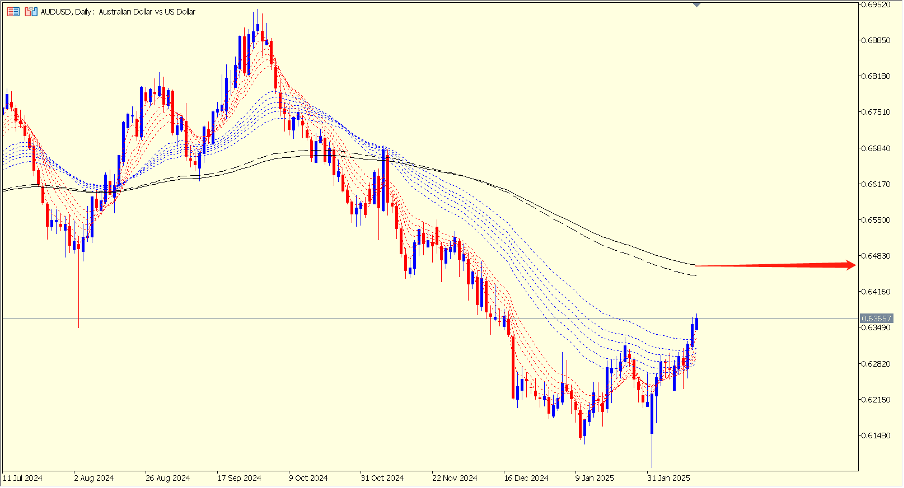
所以,虽然美元在降息,澳洲迟迟不降息,但是由于国际铁矿石价格以及中国过去进口矿产的总量影响,使得过去12个月,澳元在和美元的走势上显得非常的力不从心。但是,最近从1月以来,澳元在0.6150附近构建两个底部之后,目前在趋势线里,已经走出了一个明显的反弹信号。虽然距离关键阻力价格0.6450还有不少距离,但是一旦逼近甚至突破,不排除澳元在短期内会有更多反弹。为啥澳元可以反弹呢?这不是说美元还有可能短期不降息了么?那不应该澳元下跌么?解铃还须系铃人:还是铁矿石和中国经济在过去2,3个月出现的一系列利好消息,以及目前澳洲对于未来澳元降息力度和频繁度的期望值大大下降,都是帮助澳元在短期内反弹的原因。最后说未来:如果单纯从技术图形来看,周线图走势是一个很好的长期走势参考指标:澳元和美元自从2022年出现周线级别的下跌信号以后,就再也没回到支撑线以上。虽然在2022年11月,和2024年8月有过两次努力,但是最后都以失败告终。

从技术角度分析,现在的反弹也仅仅属于底部的反弹,距离大趋势的反转依然有至少350个基点的距离(0.6690)因此在最终反转周线级别的下跌趋势之前,技术上来说,澳元和美元下跌的大趋势并没有改变。配合经济分析:目前特朗普上台,再次开始增加关税的情况下,只有极少数情况,可以让澳元出现强劲反弹。而其中一种情况,就是中美可以达成贸易协定而停止贸易战,或者至少暂时停止。并且配合其他中国的经济刺激政策以及美国对中国临时的限制放缓。只有这样,大家对于未来中国重新提高资源需求量的期望才会增加。也只有这样,才可以提高资源产品的价格,从而帮助澳元走出目前的下跌。澳洲降息的时间可以在短期影响澳元,但是无法影响长期。我的判断依然和之前一样:长期影响澳元走势的因素,澳洲自己无法决定。免责声明:GO Markets 分析师或外部发言人提供的信息基于其独立分析或个人经验。所表达的观点或交易风格仅代表其个人;并不代表 GO Markets 的观点或立场。联系方式:墨尔本 03 8658 0603悉尼 02 9188 0418中国地区(中文) 400 120 8537中国地区(英文) +248 4 671 903作者:Mike Huang | GO Markets 销售总监

